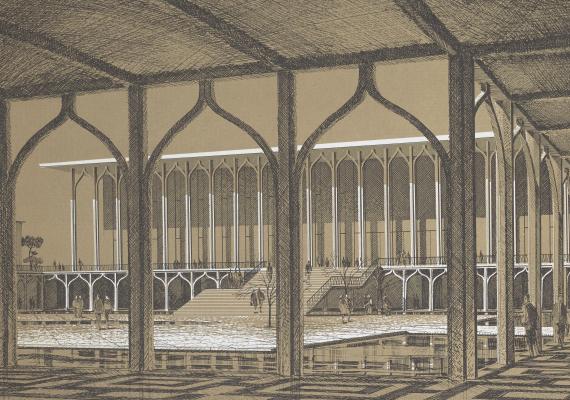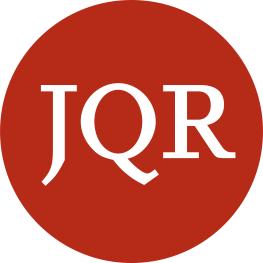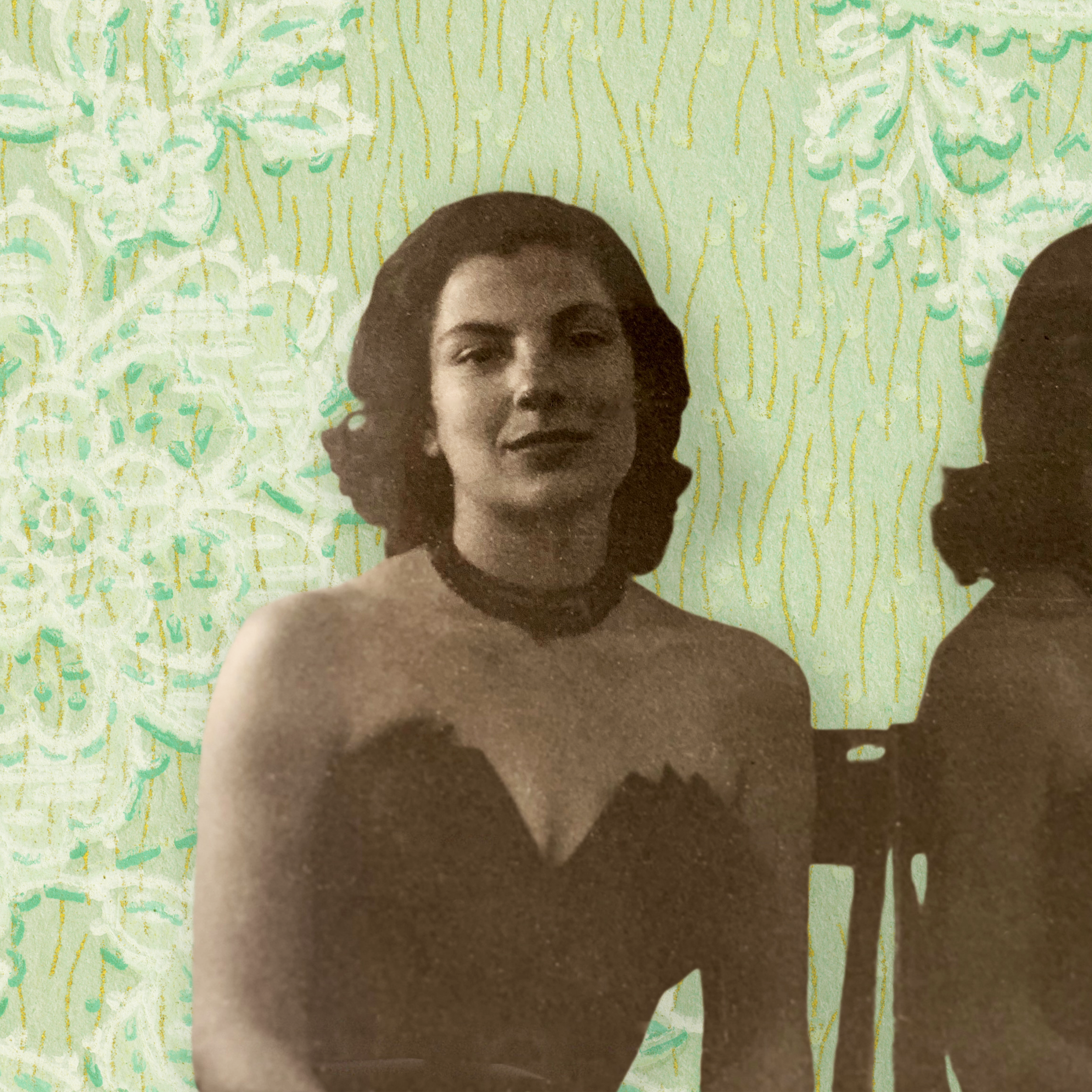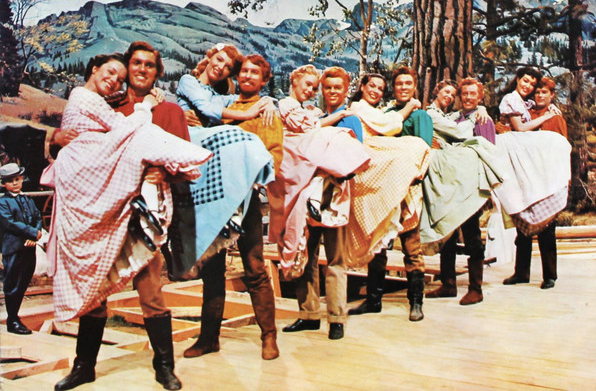"Reading Bialik in Tehran"
Daniel Amir turns to the Persian press to show us how Iranian Jewish intellectuals and activists saw, imagined, and attempted to shape their world in the vibrant years before 1948

“The University library and plaza as seen from the court,” Minoru Yamasaki and Assoc., The Pahlavi University—Shiraz Iran (1962).
The state of a nation’s press—its health or repression, its distance from or intimacy with organs of power—is a reliable bellwether of modernity. Newspapers routinely function as self-professed diagnosticians of culture and antidotes to its ills, even as they are themselves inescapably symptoms. In Daniel Amir’s essay in the summer issue of JQR, he looks at the explosion of press activity in Iran following the Allied occupation in 1941. The softening of censorship in the occupation’s wake allowed the press to give voice to a dynamic international and local scene, creating a fertile cultural soil that produced, even if it could not always sustain, more than 450 periodicals.
Newspapers quickly became vibrant voices for change in this atmosphere, and advocacy for various causes and ideas rang from every street corner. Amir is interested in how Jews used the press in the 1940s to assert their place in Iranian society, their connectedness to the world, and their solidarity with the broader Jewish diaspora, much of this was interwoven with the paper’s powerful connection to the Zionist movement.
One newspaper in particular was ‘Alam-e Yahud (The Jewish World), and Amir focuses our gaze on its commitment to literary modernism. The translations of a wide range of Hebrew works into Persian, ranging from nonfiction to belles lettres, were seen by the paper’s editors as central parts of the case they wanted to make about Jewish identity and Jewish bonds to their national home. Translation bridged between Iranian Jews and their neighbors as well as their Hebrew-speaking coreligionists abroad, simultaneously centering Jewish participation in nationalist narratives and modernity itself.
Translation is rarely a passive process, and in Amir’s close readings of some of the translations of Bialik into Persian that appeared in ‘Alam-e Yahud, he shows how the poet could be made to speak for and to the Iranian Jewish community.
To sink your teeth into all the nuances of this story, please check out “Reading Bialik in Tehran: Translation and Literary Distinctiveness in the Post-War Iranian-Jewish Periodical ‘Alam-e Yahud” in the summer issue of JQR.



